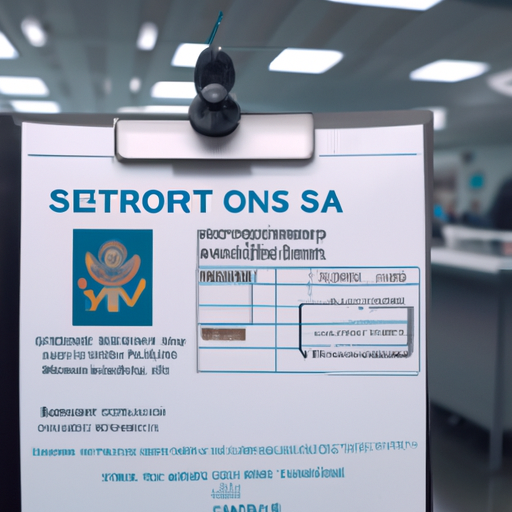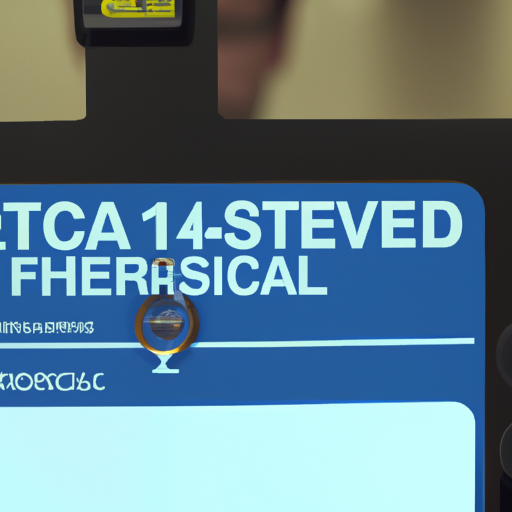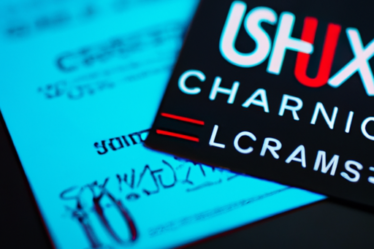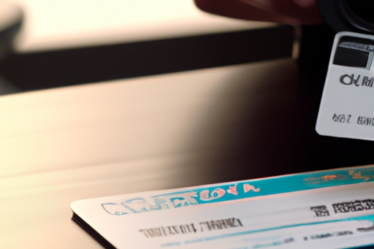
Benefits of TSA’s Mandatory ID Verification for CLEAR Members
The Transportation Security Administration (TSA) has recently implemented a new policy requiring mandatory ID verification for CLEAR members. This move aims to enhance security measures and streamline the screening process for travelers. While some may view this as an inconvenience, there are several benefits to this new requirement that CLEAR members can appreciate.
First and foremost, the mandatory ID verification ensures that only authorized individuals are granted access to the expedited screening process. By confirming the identity of CLEAR members, TSA can effectively prevent any potential security breaches. This not only enhances the safety of all passengers but also provides peace of mind for those who value the security of air travel.
Additionally, the mandatory ID verification helps to maintain the integrity of the CLEAR program. CLEAR is a trusted program that allows members to bypass long security lines and enjoy a more efficient screening process. By implementing this requirement, TSA ensures that only legitimate CLEAR members can take advantage of these benefits. This helps to prevent any misuse or abuse of the program, ensuring that it remains a valuable resource for frequent travelers.
Furthermore, the mandatory ID verification can help to expedite the screening process for CLEAR members. By confirming their identity upfront, TSA can quickly verify their eligibility and grant them access to the expedited lanes. This saves time for both the travelers and the security personnel, allowing for a smoother and more efficient screening experience. For busy individuals who are always on the go, this can be a significant advantage, as it minimizes the time spent in security lines and allows them to reach their gates more quickly.
Another benefit of the mandatory ID verification is that it helps to reduce the likelihood of mistaken identity. With the increasing number of travelers, it is not uncommon for individuals to have similar names or even identical names. This can lead to confusion and potential delays during the screening process. By verifying the identity of CLEAR members, TSA can ensure that they are correctly identified and prevent any unnecessary inconveniences or delays.
Moreover, the mandatory ID verification can also serve as an added layer of protection against identity theft. With the rise of cybercrime and data breaches, it is crucial to safeguard personal information. By requiring ID verification, TSA can verify that the person presenting the CLEAR membership is indeed the rightful owner. This helps to prevent any unauthorized individuals from accessing sensitive personal information and potentially misusing it.
In conclusion, while the mandatory ID verification for CLEAR members may initially seem like an inconvenience, it offers several benefits that can enhance the overall travel experience. From increased security measures to a more streamlined screening process, this requirement ensures that only authorized individuals can take advantage of the CLEAR program. It also helps to prevent mistaken identity and provides an added layer of protection against identity theft. So, the next time you go through airport security as a CLEAR member, remember that this new requirement is ultimately in place to make your journey safer and more efficient.
How TSA’s New Policy Affects Travelers Enrolled in CLEAR

The Transportation Security Administration (TSA) recently announced a new policy that affects travelers enrolled in CLEAR, a trusted traveler program that allows members to bypass long security lines at airports. Under this new policy, CLEAR members will be required to present a valid form of identification for verification before being granted access to the expedited security screening process.
This new requirement aims to enhance security measures and ensure that only authorized individuals are able to utilize the benefits of CLEAR. By implementing mandatory ID verification, the TSA aims to prevent any potential misuse of the program and maintain the integrity of the security screening process.
For travelers enrolled in CLEAR, this new policy means that they will need to have their identification documents readily available when going through security checkpoints. This could include a driver’s license, passport, or any other government-issued ID that meets the TSA’s identification requirements. It is important for CLEAR members to ensure that their identification documents are valid and up to date to avoid any issues or delays during the screening process.
While this new policy may seem like an inconvenience for some, it is important to remember that the primary goal is to enhance security and maintain the safety of all travelers. By verifying the identity of CLEAR members, the TSA can ensure that only trusted individuals are granted access to the expedited screening process, reducing the risk of potential security threats.
To make the process as smooth as possible, CLEAR members are encouraged to have their identification documents easily accessible and ready for inspection. This will help expedite the verification process and minimize any potential delays. Additionally, it is advisable for travelers to arrive at the airport with ample time to allow for any unforeseen circumstances or additional screening procedures that may arise.
It is worth noting that this new policy does not affect the overall benefits of being a CLEAR member. Travelers enrolled in CLEAR will still be able to enjoy the convenience of bypassing long security lines and accessing expedited screening lanes. The only change is the additional step of presenting a valid form of identification for verification.
For those who are not yet enrolled in CLEAR, this new policy serves as a reminder of the importance of trusted traveler programs in streamlining the airport security process. By enrolling in CLEAR, travelers can save valuable time and avoid the stress of long security lines. The program utilizes biometric technology to verify the identity of its members, providing a secure and efficient screening experience.
In conclusion, the TSA’s implementation of mandatory ID verification for CLEAR members is a step towards enhancing security measures at airports. While it may require an additional step for travelers enrolled in CLEAR, the overall benefits of the program remain intact. By presenting a valid form of identification, CLEAR members can continue to enjoy the convenience of expedited security screening, while ensuring the safety and security of all travelers.
The Impact of TSA’s ID Verification on Airport Security Measures
The Transportation Security Administration (TSA) has recently implemented a new policy that requires CLEAR members to undergo mandatory ID verification. This move has sparked a lot of discussion about its impact on airport security measures. In this article, we will explore the reasons behind this decision and its potential implications.
First and foremost, it is important to understand what CLEAR is and how it works. CLEAR is a trusted traveler program that allows members to bypass the regular security lines at airports. Members undergo a thorough background check and provide biometric data, such as fingerprints and iris scans, to create a secure profile. This allows them to use dedicated lanes and expedite the security screening process.
The decision to implement mandatory ID verification for CLEAR members stems from the need to enhance security measures at airports. While CLEAR has been successful in providing a convenient and efficient experience for its members, there have been concerns about potential vulnerabilities in the system. By requiring ID verification, the TSA aims to address these concerns and ensure that only authorized individuals are using the CLEAR lanes.
This new policy will require CLEAR members to present a valid government-issued ID, such as a driver’s license or passport, along with their CLEAR card. The TSA will then verify the identity of the member by comparing the information on the ID with the information in their CLEAR profile. This additional layer of verification will help prevent any potential misuse of the program and enhance overall airport security.
The impact of this ID verification requirement on airport security measures is expected to be significant. It will not only provide an extra level of assurance that only authorized individuals are using the CLEAR lanes but also act as a deterrent for those who may attempt to exploit the system. This will help maintain the integrity of the program and ensure that it continues to serve its intended purpose of expediting the security screening process for trusted travelers.
Furthermore, this move by the TSA sends a strong message that security remains a top priority. By continuously evaluating and improving security measures, the TSA is demonstrating its commitment to keeping passengers safe. This is particularly important in today’s world, where the threat of terrorism and other security risks is ever-present.
While some may argue that this new requirement adds an extra step to the already streamlined CLEAR process, it is important to remember that security should never be compromised for the sake of convenience. The TSA’s primary responsibility is to ensure the safety of all passengers, and this ID verification requirement is a step in the right direction.
In conclusion, the implementation of mandatory ID verification for CLEAR members by the TSA is a significant development in airport security measures. By requiring members to present a valid government-issued ID, the TSA aims to enhance security and prevent any potential misuse of the CLEAR program. This move sends a strong message that security remains a top priority and demonstrates the TSA’s commitment to keeping passengers safe. While it may add an extra step to the process, the importance of maintaining the integrity of airport security cannot be overstated.


